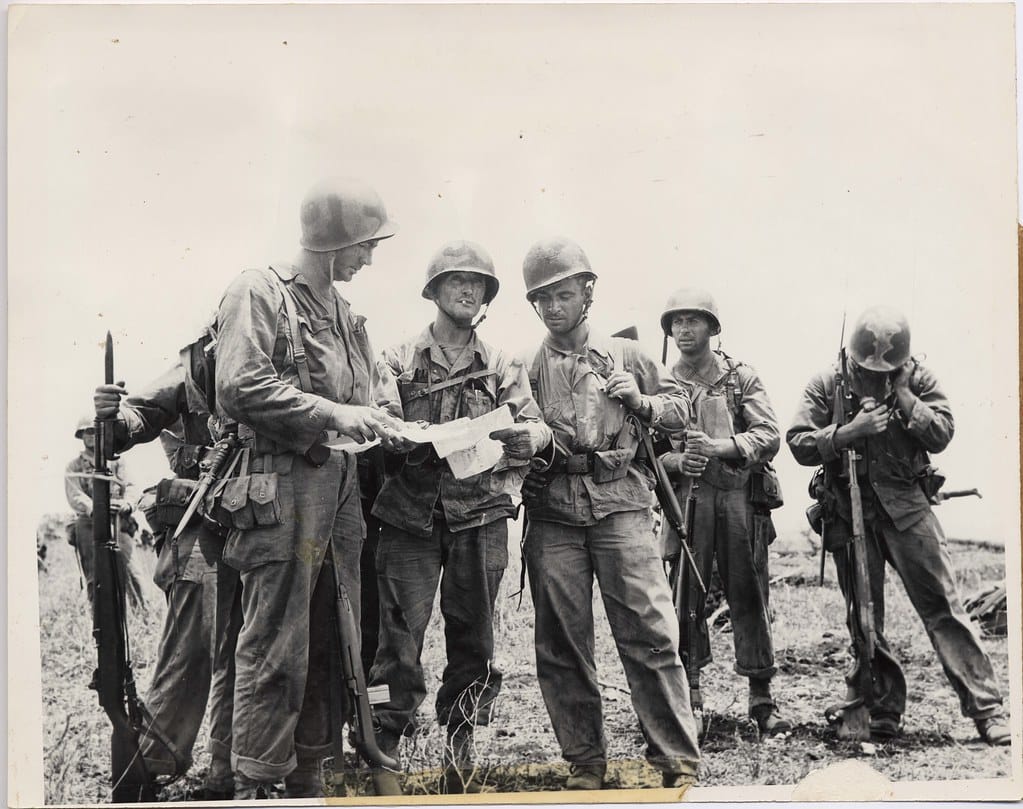On Monday, thirty members of the Congressional Progressive Caucus called on the Biden administration to pursue a negotiated peace settlement or cease-fire with Ukraine. The letter from the Progressive Caucus is careful to praise the administration for its ongoing efforts to fund Kyiv’s war effort, but also concludes that not enough is being done to encourage a negotiated settlement.
This position is heretical in Washington where the narrative is well dominated by the center-left militarist coalition that currently dominates the Democratic Party and the fading neoconservative wing of the Republican Party. In fact, so complete is the hawks’ domination of Democratic Party leadership, the Progressive Caucus was forced to withdraw its letter in less than twenty-four hours. The progressives ended up embarrassingly apologizing for suggesting diplomacy is a good thing.
Indeed, there is certainly no end in sight for U.S. intervention in Ukraine, and little support for a negotiated end to the war among foreign policy elites. The U.S. has sent more than sixty-five billion taxpayer dollars to Ukraine, and given Ukraine’s famously high levels of corruption, there’s no telling where that money ends up. Meanwhile, the U.S. has now deployed the 101st Airborne Division to Europe for the first time in almost eighty years. The division is now conducting training exercises mere miles from the Ukraine border.
The administration is now being pressured by the Democratic leadership in Congress to designate Russia a state sponsor of terrorism. This would further hobble efforts to open negotiations with Moscow and would also trigger even more sanctions against the Russian people. Even worse, Washington insiders and pundits continue to push regime change in Russia. Although he later backpedaled on his comments, President Biden declared in March that “for God’s sake, [Vladimir Putin] cannot remain in power.” Earlier this month, Republican foreign policy advisory John Bolton called for regime change. Even the dismemberment of Russia has long been a stated goal of many American Russophobes.
These calls for regime change tend to steer clear of explicitly pushing military intervention, but a brief look at Iraq, Syria, and Libya makes it clear that when American and agents call for regime change, military interventions tend to follow.
Moreover, American foreign policy hawks have been remarkably casual about the prospects for an accidental escalation into war between nuclear powers. Biden himself has admitted that the risk of “Armageddon” is the highest it’s been since the Cuban Missile Crisis of 1962, but the administration has done nothing to change course. A disturbing number of pundits have declared that nuclear war is worth the risks, and a Pew poll shows a full one-third of Americans polled want U.S. intervention in Ukraine even if it risks nuclear war. It seems we’re a far cry from the days of the height of the nuclear disarmament movement in the 1980s when marches against nuclear war could boast hundreds of thousands of people.
The Sane Position Is in Favor of Negotiation
If the U.S. regime actually cared about its alleged constituents, of course, it would withdraw from the conflict entirely. But since Washington insists on partnering with the Ukraine regime in its war, the only sane thing to do is for Washington to push hard for negotiations and to pursue a cease-fire rapidly. This position, of course, is routinely denounced by the usual hawkish suspects as being “pro-Russia.” Thus, war dissenters in Washington such as Rand Paul must state what should be obvious: that preferring negotiations to World War III hardly makes one a Putin sympathizer. Although most American foreign policy elites tend to have no problem at all with spilling copious amounts of blood and treasure in the name of Washington’s global ambitions, many Americans fortunately disagree. A recent poll shows nearly 60 percent of Americans support negotiations with Russia “as soon as possible” and want an end to the Ukraine conflict even if it means Ukraine giving up territory.
Ukraine hawks will decry such a position as a matter of Americans bargaining away Ukraine’s “sacred” territory, and thus have no “right” to do so. Yet, the Ukraine regime forfeits its right to unilaterally decide for itself what concessions must be made so long as Kyiv continues to call for American taxpayers to hand over cash. Moreover, by involving the U.S. in the conflict as a supplier of weaponry, training, and as a potential nuclear backstop, Kyiv is also demanding that Americans be placed in the line of nuclear or conventional fire should the conflict escalate. So long as the U.S. is viewed as a party to the conflict—which it obviously is—this puts Americans in harm’s way. So, yes, Americans have every right to demand a swift end to the conflict, and if necessary—as Henry Kissinger has suggested—that includes Ukraine giving up territory.
If Kyiv doesn’t like those terms, it can start refusing the money and weapons supplied by the American taxpayer.
It’s Time to End the American Preference for “Unconditional Surrender”
The American maximalist no-peace-until-total-defeat-of-Russia has its origins in the now longstanding American obsession with “unconditional surrender.” This is the idea that a military victor is only the victor when it totally dictates terms of surrender and peace. The model for this is often assumed the Japanese surrender to the U.S. at the end of the Second World War. The basic operating procedure in this case is simply to keep bombing the enemy country until its regime gives the victor everything it wants without any conditions. It was the stated policy of the Roosevelt administration during the War.
Of course, as international relations school Paul Poast has noted, “unconditional surrender” wasn’t even the case in the U.S.-Japanese conflict. The Japanese refused to surrender unless the U.S. pledged to not attempt to abolish the Japanese monarchy. Another potential “model” is the Versailles Treaty of 1919 in which the victorious Allies dictated that the defeated parties would accept “war guilt” and that Austria would be dismembered.
The fact that the terms of Versailles treaty were a leading cause of the rise of Hitler and of the Second World War should be reason enough to abandon this model.
But the Japanese surrender and the Versailles treaty are extreme cases. The fact is that very few wars are ended along the lines of anything we would call “unconditional surrender.” This has been known for a long time, and was explored in detail by Coleman Phillipson in his 1916 book Termination of War and Treaties of Peace. Phillipson notes that in cases where total “subjugation” of another state occurs, there was no reason for concluding a negotiated settlement, as the imposition of the conqueror’s will on the conquered nation involved merely a unilateral arrangement.” The normal, far more common mode of bringing about peace in international conflicts, however, is a “compromise ad hoc, involving an agreement as to demands made on both sides, and settling all the matters in dispute.”
Indeed, many military personnel in World War II were alarmed by the administration’s adoption of the new doctrine with General Dwight Eisenhower’s naval aide Captain Harry Butcher stating privately that “any military person knows that there are conditions to every surrender.”
Moreover, the maximalist hawks underestimate costs likely to be incurred by the United States / North Atlantic Treaty Organization faction. If the goal is truly to impose a unilateral peace on Moscow, this is likely to require far more bloodshed and taxpayer treasure than a negotiated settlement. This may be perfectly fine for many American elites, but for many ordinary people who are forced to fund the war and submit to various trade restrictions and shortages, the cost could be sizable.
For these reasons, among others, Berenice Carroll concludes (in “How Wars End: An Analysis of Some Current Hypotheses”) that it is not actually all that easy to determine the “victor” from the “loser” in an international conflict once all of the costs have actually been analyzed. Or, as Lewis Coser has put it, because of this, “most conflicts end in compromises in which it is often quite hard to specify which side has gained relative advantage.” For this reason, it’s important to think long and hard about doubling down on a “strategy” that’s guaranteed to prolong a conflict indefinitely. This is all the more true when nuclear powers are involved.
Yet, from the point of view of the moralizing hawks, no “sacrifice” is too great for ordinary Americans or Europeans to bear in the name of “containing” Russia and hopefully even ending the regime itself. The hawks are always dreaming of great moral victories, no matter the cost. In real life, however, the bloodshed will likely only stop when we ignore the American advocates of nuclear brinkmanship and more pragmatic heads prevail. The proper position now—especially in a nuclear environment—is not to pine for a global moral crusade but to explore ways to bring about the end of active hostilities. This is done through negotiated settlements and compromise. The hawks seeking to “shame” the advocates of peace are really just agents of more war, more bloodshed, and religious fervor in favor of “territorial integrity” and other nationalist myths.
The foreign policy elites, however, only benefit politically and financially from more war, ongoing ad nauseum. There is as of yet no downside for these elites in more war. The fact that they’ve quashed even some small-scale calls for negotiations on the part of some progressives shows that the war party is a long way from abandoning its fetish for “unconditional surrender.”































